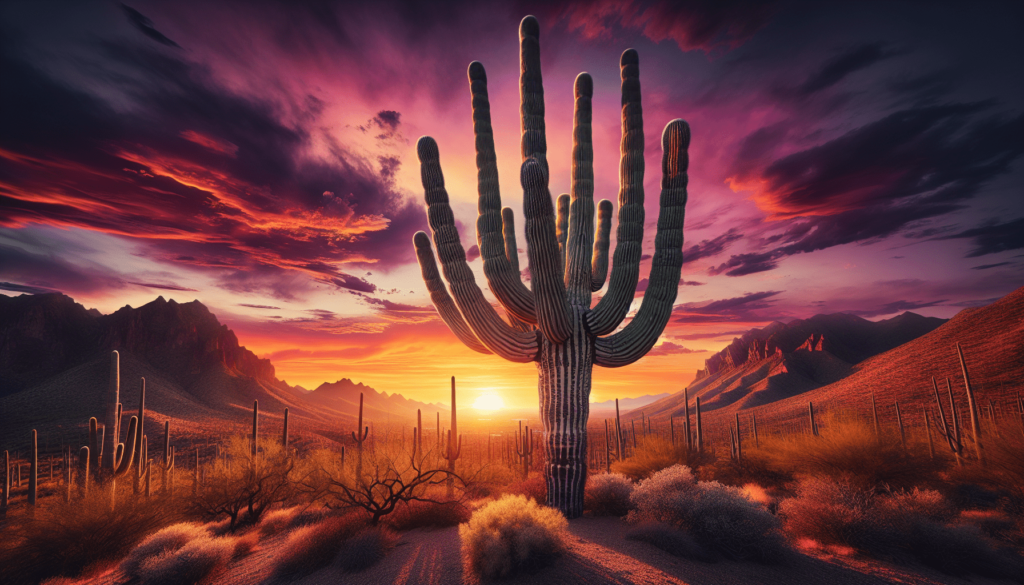
What comes to mind when you think of the American Southwest? Is it the vast deserts, striking rock formations, or perhaps the iconic cacti that seem to reach for the sky? If cacti are on your list, then Saguaro National Park in Arizona should definitely be on your radar. Let’s take a moment to look into what makes this park special and how you might enjoy it during your visit.
A Brief Overview of Saguaro National Park
Saguaro National Park is located in southern Arizona and is home to the majestic saguaro cactus, a symbol of the American Southwest. The park encompasses two separate districts: the Tucson Mountain District to the west and the Rincon Mountain District to the east. Each offers a unique experience, showcasing different landscapes and opportunities for outdoor activities.
The Saguaro Cactus: Nature’s Icon
Is there anything more iconic of the Southwest than the saguaro cactus? These towering plants can grow to be over 40 feet tall and live for more than 150 years. They are a vital part of the local ecosystem, providing habitat and food for various wildlife, including birds, mammals, and reptiles.
Interesting Facts about the Saguaro
- Growth Rate: A saguaro can take up to 50 years to grow its first arm, but they can reach heights of up to 60 feet.
- Water Storage: A mature saguaro can weigh between 1,500 and 2,200 pounds, depending on how much water it has stored within.
- Flowering: The saguaro blooms in late April to early June, producing beautiful white flowers that open up at night and close during the day.
Understanding the role these cacti play in the environment makes your visit even more meaningful.
Getting to Know the Park’s Districts
Whether you prefer hiking, biking, or driving, both districts offer something for everyone.
Tucson Mountain District
This is the more developed area of the park. It is often characterized by its more accessible trails and scenic overlooks. Here, you can find a visitor center that provides essential information about the park’s flora, fauna, and geology.
Key Features
- Hiking Trails: The district is home to several popular trails, such as the Valley View Overlook Trail, which provides a spectacular view of the saguaro forest.
- Wildlife Viewing: Expect to see a variety of animals, including javelinas, coyotes, and a diverse array of birds. Early morning or late evening are the best times for wildlife spotting.
Rincon Mountain District
If you’re looking for a more remote experience, the Rincon Mountain District is perfect. It offers rugged terrain and more challenging hikes that take you deeper into the Sonoran Desert.
Key Features
- Longer Hikes: Trails like the Rincon Peak Trail offer a rewarding challenge, leading you to breathtaking vistas.
- Backcountry Camping: For those wanting to immerse themselves in the wilderness, designated camping areas are available, but reservations may be required.

Navigating the Trails
Exploring the park on foot can be one of the most rewarding experiences. Each trail offers something unique, whether it’s stunning views, unique rock formations, or the chance to see diverse wildlife.
Popular Hiking Trails
| Trail Name | Length | Difficulty Level | Highlights |
|---|---|---|---|
| Valley View Overlook Trail | 1.0 miles | Easy | Scenic overlook of the desert |
| Signal Hill Trail | 1.5 miles | Moderate | Ancient petroglyphs |
| Cactus Forest Loop Trail | 2.0 miles | Easy | Variety of cactus species |
| Rincon Peak Trail | 10.4 miles | Hard | Panoramic views from the summit |
Each of these hikes has something special to offer. Make sure to wear sturdy shoes and bring enough water!
Wildlife Watching
Your visit to Saguaro National Park wouldn’t be complete without some wildlife viewing. The park is home to numerous species that inhabit the desert ecosystem.
Common Species You Might Encounter
- Birds: Look out for the Gambel’s quail and the cactus wren, both of whom thrive in this environment.
- Mammals: You’re likely to see desert cottontails and perhaps even a bobcat during your visit.
- Reptiles: The park is home to several species of lizards and snakes. Be cautious, as some snakes are venomous, but they generally avoid humans.
Bringing a pair of binoculars could enhance your wildlife-watching experience, allowing you to spot these fascinating creatures from a distance.

Weather and Best Time to Visit
When planning your trip, the weather is an important consideration.
Seasonal Overview
- Spring (March to May): This is one of the best times to visit, as temperatures are mild and the desert blooms with wildflowers.
- Summer (June to September): Expect high temperatures, often exceeding 100°F. If you choose to visit during the summer, plan for early morning hikes.
- Fall (October to November): Autumn offers cooler temperatures and the opportunity to enjoy the park’s beauty without the summer crowds.
- Winter (December to February): While it can get chilly at night, daytime temperatures are typically pleasant for hiking.
Regardless of when you visit, be sure to check the weather forecast and prepare accordingly.
Camping in the Park
If you’re looking to connect with nature, consider spending a night at one of the park’s campgrounds. Camping can provide a more immersive experience and the chance to see the desert come alive at night.
Available Campgrounds
- Gilbert Ray Campground: Located in the Tucson Mountain District, this campground offers beautiful scenery and quick access to hiking trails.
- Loma Verde Campground: Found in the Rincon Mountain District, this area features fewer amenities but more solitude.
Keep in mind that campgrounds fill up quickly during peak season, so reservations are recommended.

Photography Tips
Saguaro National Park is a paradise for photographers. The unique landscapes and stunning sunsets provide ample opportunities for capturing breathtaking images.
Best Times for Photography
- Golden Hour: Early morning and late afternoon are when the light is softest, resulting in stunning photographs.
- Night Sky: With minimal light pollution, the park is an excellent location for astrophotography. Don’t forget to bring a tripod!
Photography Locations
- Cactus Forest Drive: This scenic drive offers various pullouts for you to stop and take pictures of the iconic saguaros.
- Signal Hill: A great spot for petroglyph photography and panoramic desert views.
With a camera in hand, you’ll be able to capture the beauty of the park to share with friends and family.
Visitor Centers and Resources
Before you head off to explore, a visit to one of the park’s visitor centers is worthwhile. Both districts have centers that provide maps, information, and educational displays.
Tucson Mountain Visitor Center
Located near the entrance of the Tucson Mountain District, this center also sells books, maps, and other souvenirs. Knowledgeable rangers can provide tips about the best trails and activities based on current conditions.
Rincon Mountain Visitor Center
This center offers a quieter atmosphere and is a great place to pick up informational brochures and ask about current events or ranger-led programs.

Safety Tips
As with any natural area, keeping safety in mind during your visit is essential.
Important Safety Guidelines
- Stay Hydrated: The desert can be hot and dry, so always carry water and drink frequently.
- Sun Protection: Wear a hat, sunglasses, and sunscreen to protect yourself from the sun.
- Know Your Limits: Choose trails that fit your skill level. If you’re feeling tired, it’s okay to turn back.
By following these tips, you’ll ensure that your visit is both enjoyable and safe.
Educational Programs and Ranger-Led Activities
One of the joys of visiting national parks is the chance to learn more about nature through ranger-led programs and activities.
Types of Programs Available
- Guided Hikes: Rangers often lead hikes that provide educational information about the local flora and fauna.
- Talks and Workshops: Various programs on desert ecology, the lifecycle of the saguaro cactus, and the history of the area are offered.
- Junior Ranger Program: If you’re visiting with kids, consider enrolling them in the Junior Ranger program, which offers activities to help them learn about the park.
Participating in these programs can enrich your visit and give you a deeper appreciation of the park.

Conclusion
Saguaro National Park is more than just a beautiful landscape filled with iconic cacti; it’s a rich ecosystem full of diverse wildlife and unique geological features. From hiking through stunning trails to enjoying the tranquility of a desert sunset, there is so much to see and do.
So, whether you’re a seasoned hiker, a casual visitor, or a family looking for a weekend trip, consider making Saguaro National Park your next destination. The memories you create and the experiences you have will undoubtedly be cherished long after your visit. Be sure to pack appropriately, stay safe, and take in every moment you spend in this magnificent natural haven!